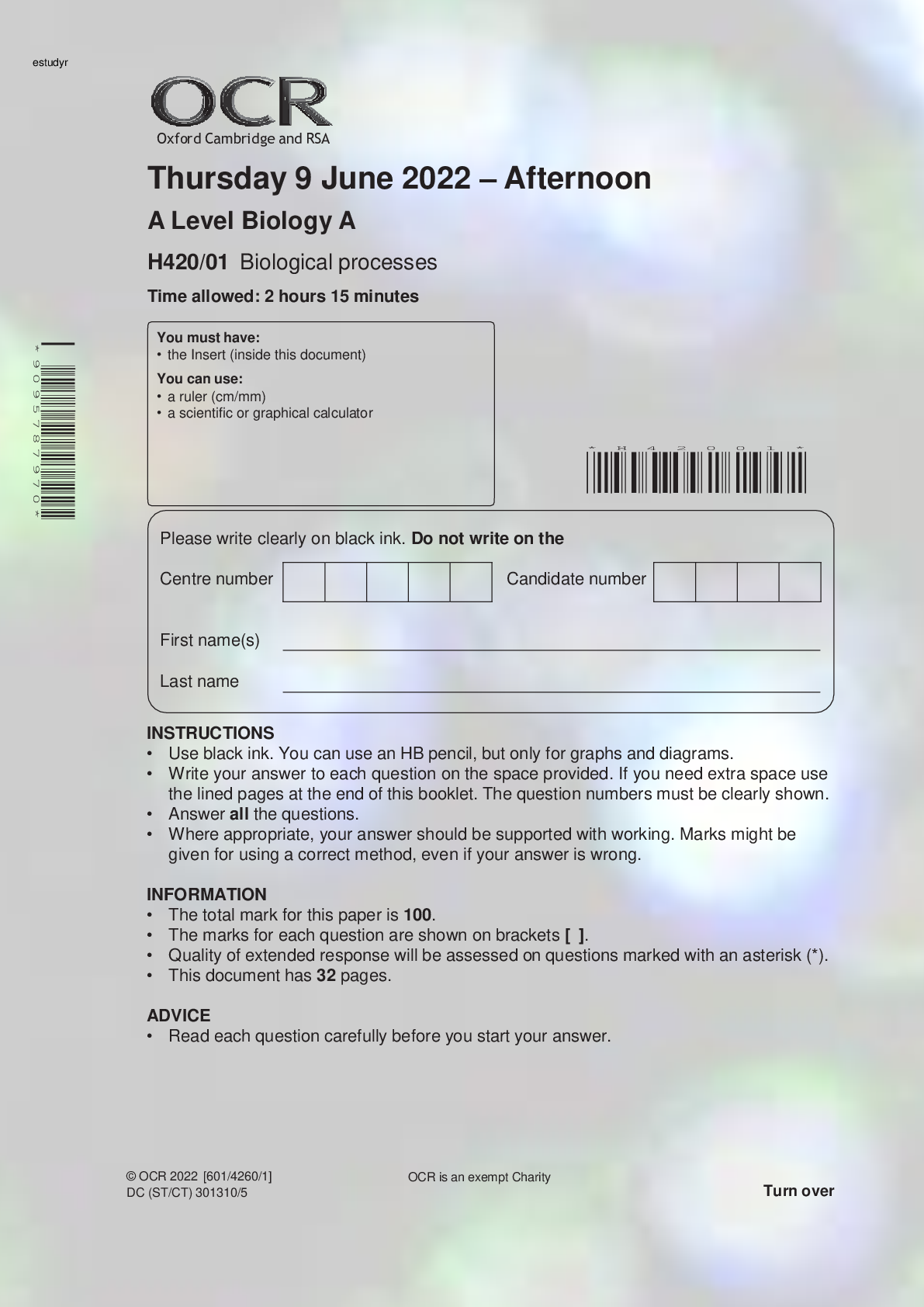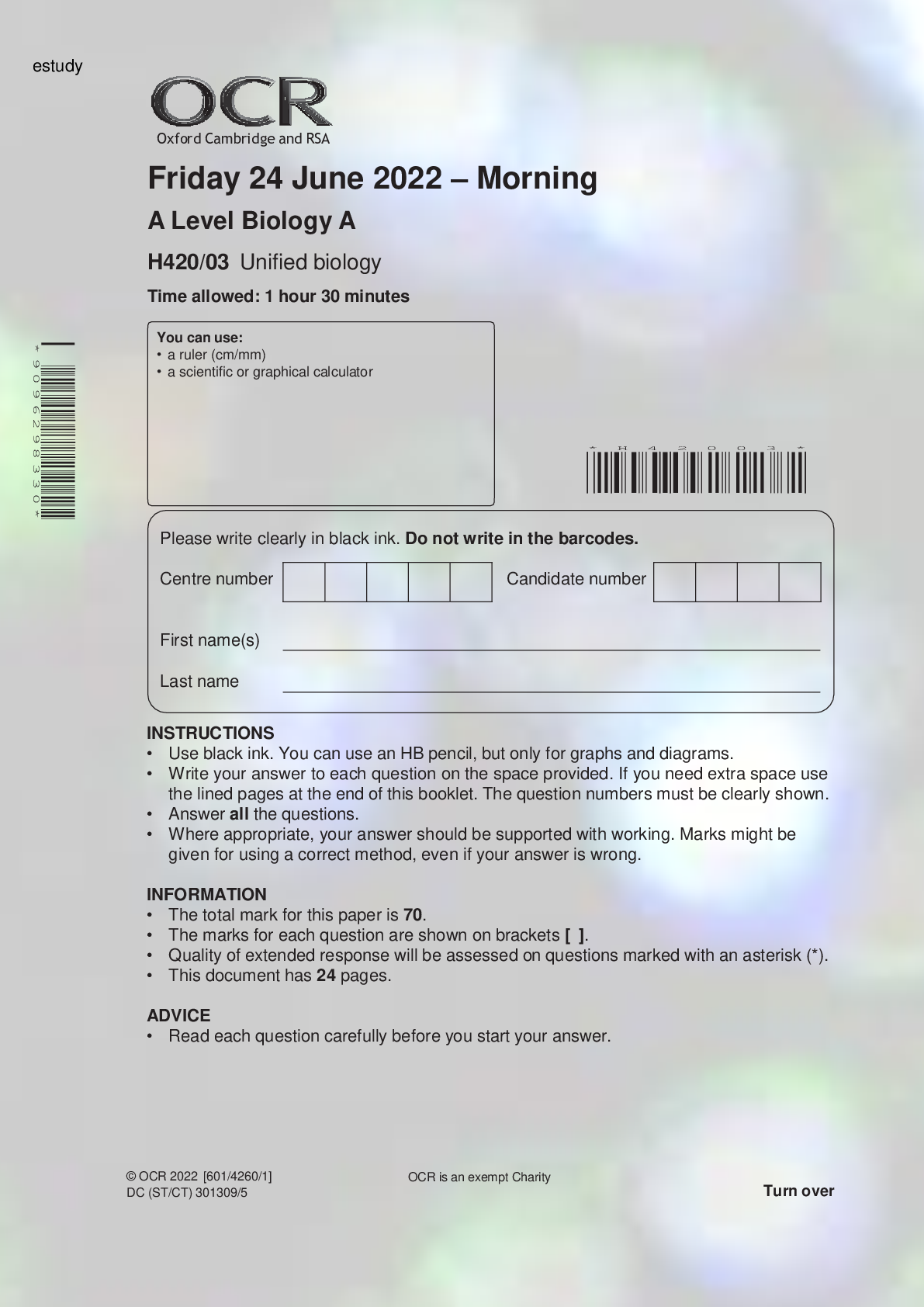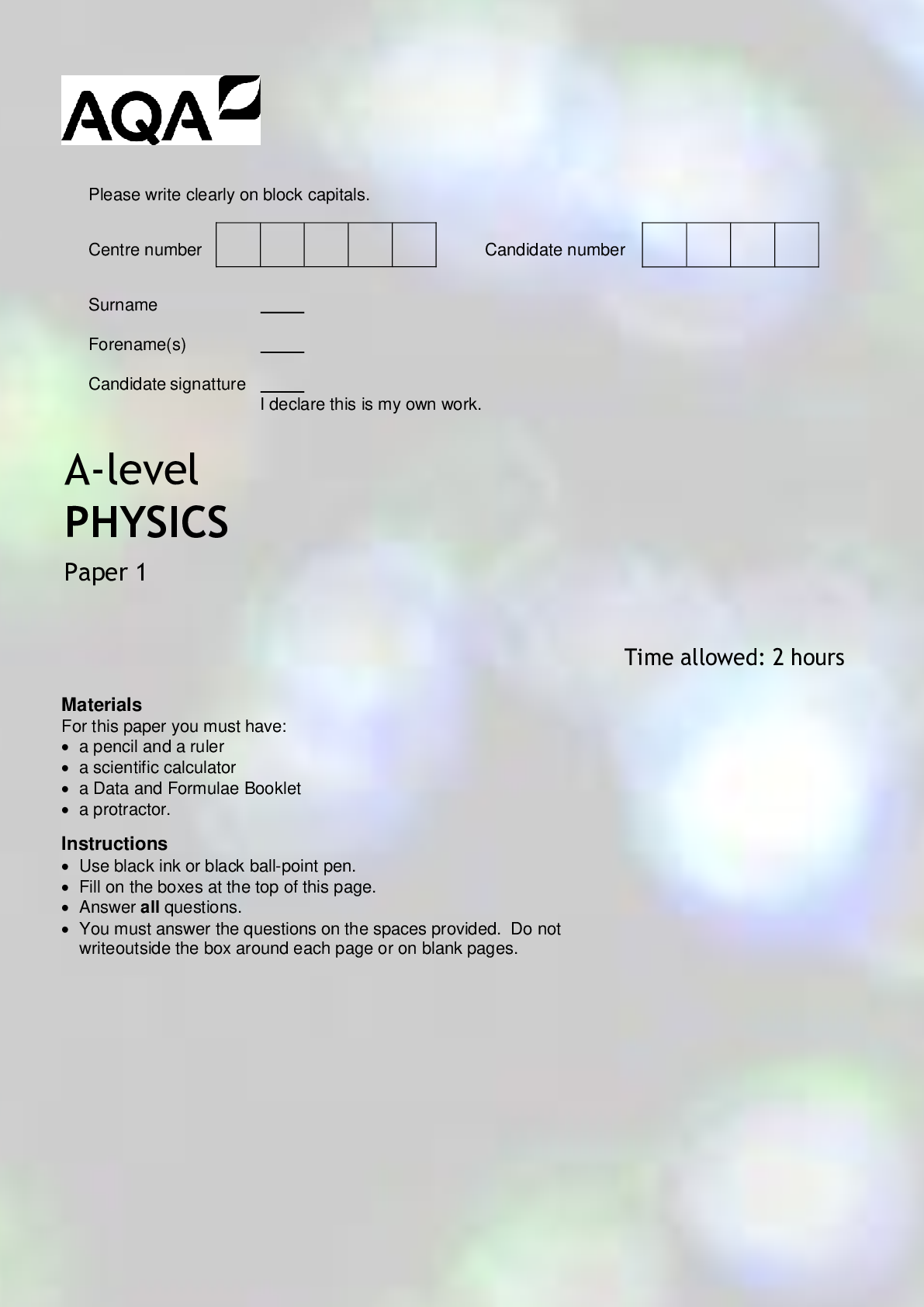Sociology > AQA Question Papers > OCR Interchange A Level Advanced GCE. SOCIOLOGY Question Paper Autumn 2021/ H580/02 Researching and (All)
OCR Interchange A Level Advanced GCE. SOCIOLOGY Question Paper Autumn 2021/ H580/02 Researching and understanding social inequalities
Document Content and Description Below
October 2021 A Level Sociology H580/02 Researching and understanding social inequalities Time allowed: 2 hours 15 minutes INSTRUCTIONS • Use black ink. • Write your answer to each que... stion in the Answer Booklet. The question numbers must be clearly shown. • Fill in the boxes on the front of the Answer Booklet. • Answer all the questions. INFORMATION • The total mark for this paper is 105. • The marks for each question are shown in brackets [ ]. • Quality of extended response will be assessed in questions marked with an asterisk (*). • This document has 4 pages. ADVICE • Read each question carefully before you start your answer. Turn over SECTION A Source A 2013 2014 2015 2016 2017 Ethnicity White* 10.52 10.74 10.84 11.05 11.34 Indian 11.29 12.18 11.58 12.29 13.14 Pakistani/Bangladeshi 8.27 7.88 9.15 9.33 9.52 Black 10.30 10.27 9.77 10.24 11.10 Mixed 11.57 11.11 10.85 11.06 11.26 Other including Chinese and Other Asian 9.77 9.81 9.88 10.78 11.05 Adapted from: GOV.UK Ethnicity facts and figures (2018). Source B Qualitative research on young offenders using mixed methods. Nalita James was part of a group of researchers who undertook a project to research young men in a YOI in the East Midlands (a YOI is a Young Offender Institution, a form of prison for young people aged 16–21). James and her colleagues wanted to explore the world of the young offenders from their own viewpoint ‘in order to give them a voice’. The methods included two focus group interviews, observation and field notes, as well as 5 individual interviews to gain insight into the young men’s experiences. An initial problem with the project was gaining access; the researchers had to obtain permission from the management of the YOI. They eventually convinced them of the value of the project after some negotiation. To collect their sample the researchers put up posters in the education wing asking for volunteers. 18 young offenders signed up to take part, though only 14 completed the project as 10 some were released or transferred to other institutions during the research. All of the prisoners had negative life experiences and some had a range of problems such as mental health issues and learning difficulties. All of the young men had left compulsory education before the age of 16, with some saying they had never attended school. The researchers tried hard to create an atmosphere where participants could freely say what 15 they liked without being judged, in contrast to the generally restrictive nature of prison life. Some participants were initially reluctant to open up to the researchers but it was made clear that they were free to say nothing or even to withdraw from the research at any time. All the participants were assured of confidentiality during the research. However, the researchers warned those involved that if they informed them of something that would put 20 others in danger, the research team would have to inform the authorities. The team introduced themselves as researchers who were independent from the prison authorities and interested in finding out about the young offenders’ lives both inside and outside prison. James describes the researchers as adopting the role of ‘semi-participant observers’. The researchers felt that to achieve the aims of the project it was important to ensure the 25 difference in power between researchers and the young offenders was reduced. For example, the researchers tried not to judge the young offenders (unlike many of the prison officers) and early on agreed that they would call one another by their first names (while the prison officers used surnames). The researchers found finishing the project difficult. Whilst the research team had always been 30 honest in explaining exactly how long they would be working with the young offenders, when leaving the project some of the offenders were upset to see them go. The researchers also felt some guilt and unease about leaving the YOI, not knowing what would happen to the young offenders after their departure. James admits that sometimes she and her colleagues reacted emotionally to the stories they heard. At times it became difficult to maintain a sense of 35 distance and detachment, particularly during the interviews. This affected their interpretations and representations of the young men’s stories. The researchers tried to overcome these problems by being reflexive about their own role in the research and concluded that they had achieved some success in allowing a marginalised group of young men to open up about their lives and experiences and to reflect on different paths, which they might take in their lives. 40 Nalita James (2013) ‘Research on the ‘Inside’: The Challenges of Conducting Research with Young Offenders’, Sociological Research Online, 18 (4) 14 Turn over Answer all the questions. 1 Summarise two patterns or trends in the data shown in Source A. [4] 2* With reference to Source B, explain two ethical issues which sociologists studying young offenders in a Young Offender Institution would need to consider in their research. [6] 3* With reference to Source A, explain one strength and one weakness of using official statistics to study ethnic differences in pay. [10] 4* Using Source B and your wider sociological knowledge, explain and evaluate the use of qualitative methods to research young people in a Young Offender Institution. [25] SECTION B Answer all the questions. 5* Outline ways in which gender can influence a person’s life chances. [20] 6* Assess Weber’s view that inequalities in society are explained by differences in class, status and party. [40] END OF QUESTION PAPER [Show More]
Last updated: 1 year ago
Preview 1 out of 4 pages
Instant download
.png)
Instant download
Also available in bundle (1)
.png)
OCR Interchange A Level Advanced GCE. SOCIOLOGY Question Papers and Mark Schemes October 2021/ Complete Solutions
OCR Interchange A Level Advanced GCE. SOCIOLOGY Question Papers and Mark Schemes October 2021/
By Axeldee 2 years ago
$35
5
Reviews( 0 )
Document information
Connected school, study & course
About the document
Uploaded On
Feb 26, 2022
Number of pages
4
Written in
Additional information
This document has been written for:
Uploaded
Feb 26, 2022
Downloads
0
Views
101


.png)
.png)
.png)











 - Paper 3 v1.png)
 - Paper 2.png)
 - Paper 1.png)

.png)
.png)
.png)

